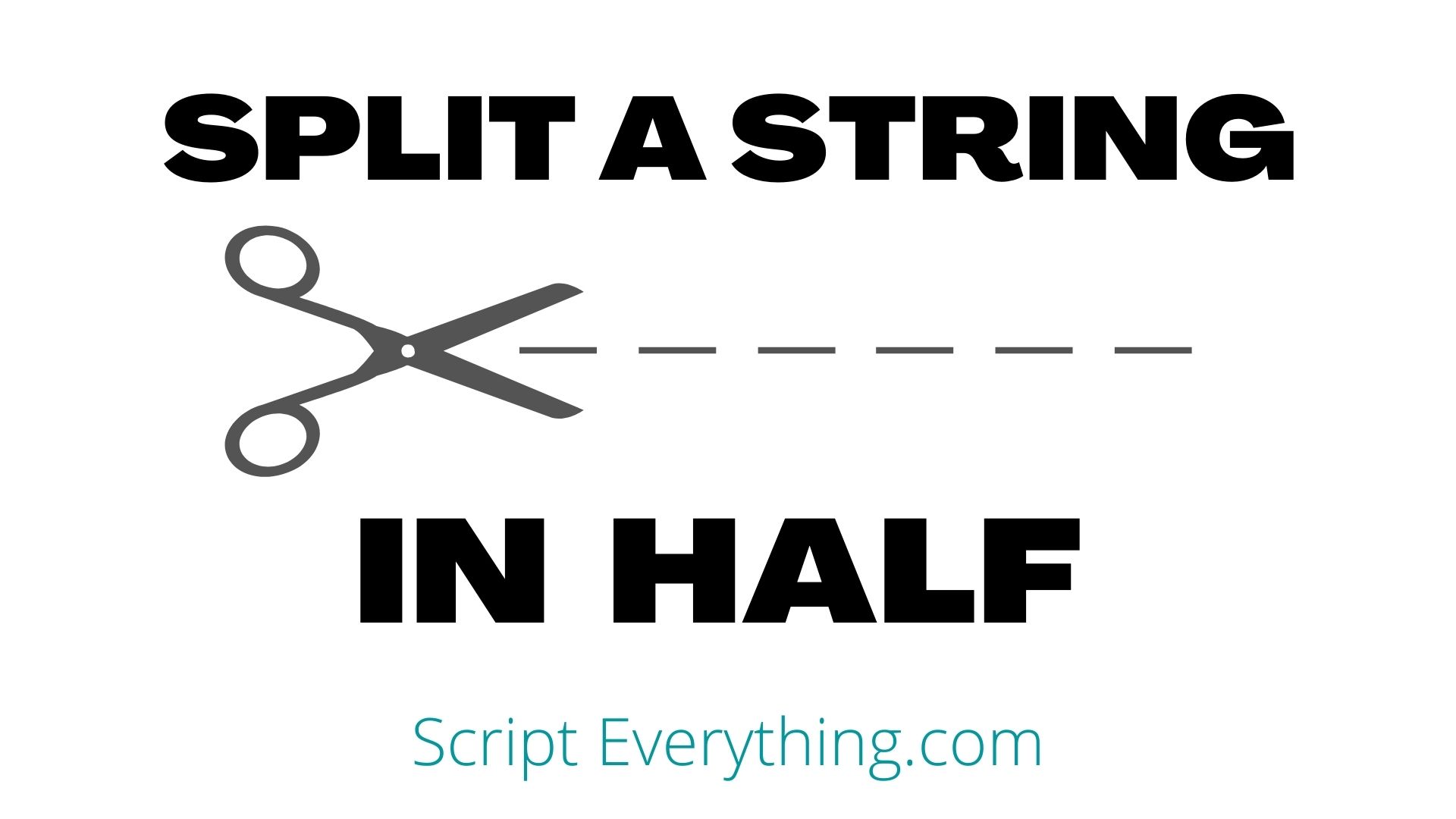How do you split a string into two equal halves using Python? To tackle this exercise you need to know how you’re going to operate on odd numbered string lengths.
For example, how would you like your code to operate on the string halve . As it has 5 characters you’re going to have 5 possible solutions:
- hal and ve OR ha and lve
- ha, l and ve
- halve OR None
The first solution just placed the middle character to either side giving the extra character to the first half or second half.
The second solution breaks up the string into equal halves, but as there is a middle character it separates this out.
The third solution returns a solution back to the user to imply that the string cannot be halved.are somewhat the same, but give answers to show that the string cannot be halved equally.
Let’s explore one of these solutions and how it can be coded using Python.
Halve But Put Middle Character To One Side
To halve a string using Python the easiest way is to use the slice operator. The slice operator takes three parameters, with all three being optional.
The slice operator on a string looks something like this:
my_string[start:stop:step]
The first parameter
start
represents the starting index number to begin the capture from the original string
my_string
and is inclusive of that capture. The second parameter
stop
represents the ending index number to stop capture from the original string and is
exclusive
of that capture. Finally, the third parameter
step
is the jump capture from
start
to
stop
.
If the
start
value is empty it is assumed the capture begins at the
first character
in the string. If the
stop
value is empty it is assumed the capture stops at the
last character
in the string. Finally, if the
step
value is empty it is assumed the jump capture is 1.
The next step with this halving problem is to work out how to handle odd-numbered characters from the string.
If a string has an even number of characters then the halving is quite easy, however, if the number of characters in the string is odd then you will need to round either up or down.
Is Number Of Characters Odd Or Even?
If you have a string that contains an odd amount of characters you would need to round down that number as you cannot capture half of a character.
Thankfully, by using the double slash operator in Python you can round down a positive number.
>>> my_string = "Oddly"
>>> len(my_string)
5
>>> len(my_string)/2
2.5
>>> len(my_string)/2 // 1
2.0
>>> int(len(my_string)/2 // 1)
2As you can see from the above operations by using the double slash operator on a positive number the number has a floor division applied when that floor division is done against 1.
To remove the decimal place I wrapped everything in the built-in
int(n)
function.
To obtain the two halves of our string the operation can now be wrapped into something like this:
>>> my_string = "Oddly"
>>> half = int(len(my_string)/2 // 1)
>>> my_string[:half], my_string[half:]
('Od', 'dly')
>>> my_string = "Evenly"
>>> half = int(len(my_string)/2 // 1)
>>> my_string[:half], my_string[half:]
('Eve', 'nly')As you can see from the above examples the split in half operation works very well for even-numbered words, but for odd-numbered words it tries to do its best and adds an additional character to the second half.
Therefore, a solution if used as a single one-liner piece of Python code would look something like this:
>>> my_string = "Oddly"
>>> my_string[:(x:=int(len(my_string)/2//1))], my_string[x:]
('Od', 'dly')
>>> my_string = "Evenly"
>>> my_string[:(x:=int(len(my_string)/2//1))], my_string[x:]
('Eve', 'nly')
The code example above uses the
walrus operator
to prevent doubling the operation where the calculation of half the string is performed:
int(len(my_string)/2//1
. By assigning the value from this to a variable
x
I can reuse this value later in the one-liner statement.
Summary
To cut a string into halves use the following operation which returns a tuple of each half:
my_string[:(x:=int(len(my_string)/2//1))], my_string[x:]
where
my_string
is the variable containing the string to be halved.
By performing this operation you would have discovered several handy operators in Python: slice operator , floor division operator , and the walrus operator .

